Role of bacterial adhesion in the microbial ecology of biofilms in cooling tower systems
- PMID: 19177226
- PMCID: PMC2723952
- DOI: 10.1080/08927010802713414
Role of bacterial adhesion in the microbial ecology of biofilms in cooling tower systems
Abstract
The fate of the three heterotrophic biofilm forming bacteria, Pseudomonas aeruginosa, Klebsiella pneumoniae and Flavobacterium sp. in pilot scale cooling towers was evaluated both by observing the persistence of each species in the recirculating water and the formation of biofilms on steel coupons placed in each cooling tower water reservoir. Two different cooling tower experiments were performed: a short-term study (6 days) to observe the initial bacterial colonization of the cooling tower, and a long-term study (3 months) to observe the ecological dynamics with repeated introduction of the test strains. An additional set of batch experiments (6 days) was carried out to evaluate the adhesion of each strain to steel surfaces under similar conditions to those found in the cooling tower experiments. Substantial differences were observed in the microbial communities that developed in the batch systems and cooling towers. P. aeruginosa showed a low degree of adherence to steel surfaces both in batch and in the cooling towers, but grew much faster than K. pneumoniae and Flavobacterium in mixed-species biofilms and ultimately became the dominant organism in the closed batch systems. However, the low degree of adherence caused P. aeruginosa to be rapidly washed out of the open cooling tower systems, and Flavobacterium became the dominant microorganism in the cooling towers in both the short-term and long-term experiments. These results indicate that adhesion, retention and growth on solid surfaces play important roles in the bacterial community that develops in cooling tower systems.
Figures

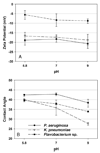
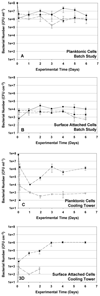
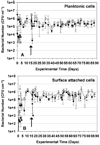
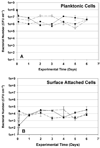
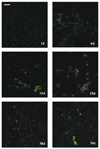
References
-
- Addiss DG, Davis JP, Laventure M, Wand PJ, Hutchinson MA, McKinney RM. Community-acquired Legionnaires’-disease associated with a cooling-tower-evidence for longer-distance transport of Legionella pneumophila. Am J Epidemiol. 1989;130:557–568. - PubMed
-
- ASHRAE. ASHRAE HVAC Systems & Equipment Handbook 2000. ASHRAE; Atlanta (GA): 2000.
-
- Atlas RM. Legionella: from environmental habitats to disease pathology, detection and control. Environ Microbiol. 1999;1:283–293. - PubMed
Publication types
MeSH terms
Substances
Grants and funding
LinkOut - more resources
Full Text Sources
Molecular Biology Databases
